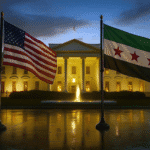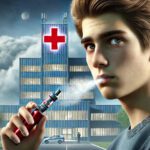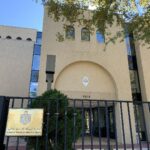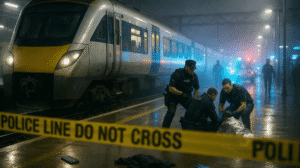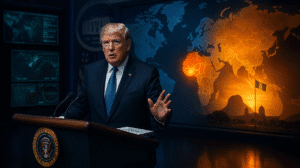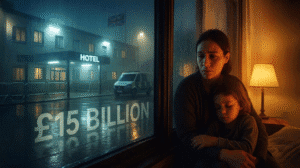On February 4, 2025, Sweden experienced its deadliest mass shooting to date when a gunman opened fire at Campus Risbergska, an adult education center in Örebro, resulting in the deaths of 11 individuals, including the perpetrator, and leaving several others injured.
This tragic event has sent shockwaves throughout the nation, prompting discussions on security, gun control, and societal challenges. The attack commenced around 12:30 p.m. local time.
The assailant, identified as 35-year-old Rickard Andersson, entered the facility armed with multiple firearms, including a hunting rifle and shotguns concealed within a guitar case. He proceeded to open fire on students and staff, causing chaos and panic.
Witnesses described scenes of terror, with individuals seeking cover and attempting to barricade themselves in classrooms. Emergency services responded swiftly, but by the time the situation was under control, 10 victims had lost their lives, and several others were injured. Andersson was found deceased at the scene, with authorities indicating that he likely took his own life after the attack.
The Perpetrator and the Victims
Rickard Andersson was a former student of Campus Risbergska, having attended courses there in 2013 and 2019, though he had not been enrolled since 2021. Described as a reclusive individual, Andersson had been unemployed and living in isolation since 2016.
He legally owned several firearms and had recently acquired a significant amount of ammunition and smoke grenades. Authorities have stated that he had no prior criminal record and was not known to law enforcement agencies. The motive behind his actions remains under investigation, with officials exploring various possibilities but cautioning against premature conclusions.
The victims of this senseless act ranged in age from 28 to 68 and included both students and staff members. Among them was 28-year-old Salim Karim Iskef, an aspiring nurse who managed to video-call his fiancée to express his love before succumbing to his injuries.
The diverse backgrounds of the victims reflect the inclusive nature of Campus Risbergska, which offers educational opportunities to adults, including immigrants and individuals with disabilities. The tragedy has deeply affected the Örebro community and the nation at large, leading to vigils, moments of silence, and an outpouring of support for the families of the victims.
Government Response
In the aftermath of the shooting, the Swedish government has announced plans to enhance security measures across all educational institutions. Proposed initiatives include the development of plans to prevent unauthorized access, the installation of surveillance cameras, and the implementation of controlled access systems.
Additionally, the government intends to expedite legislative measures to tighten gun laws, particularly concerning the ownership of semi-automatic weapons. Education Minister Johan Pehrson emphasized the need for schools to be safe havens for learning and personal development, stating that such measures are essential to prevent future tragedies.
This incident has occurred against a backdrop of increasing gun violence in Sweden, a nation previously known for its low crime rates and high levels of social trust. In recent years, Sweden has grappled with a rise in gang-related crimes, shootings, and bombings, often linked to drug trafficking and social integration challenges.
The attack at Campus Risbergska has intensified debates on issues such as immigration, social cohesion, and the adequacy of current gun control measures. Prime Minister Ulf Kristersson described the day of the shooting as a “very painful day for all of Sweden,” underscoring the profound impact of the tragedy on the national psyche.
While Sweden has experienced instances of mass violence in the past, such as the Ådalen shootings in 1931 and the Malmö shootings between 2009 and 2010, the scale and nature of the Örebro attack are unprecedented in the country’s modern history. The Ådalen incident involved military personnel firing on striking workers, resulting in five deaths, while the Malmö shootings were a series of racially motivated attacks targeting immigrants.
The Örebro shooting stands out not only for its higher casualty count but also because it targeted an educational institution, a setting traditionally considered safe and secure.
Looking Ahead
As investigations continue, authorities are focused on understanding the factors that led to this tragedy, including any potential warning signs or systemic issues that may have been overlooked.
The government’s proposed measures aim to prevent similar incidents in the future, but they also raise questions about balancing security with personal freedoms and maintaining the openness that Swedish society values. The nation faces the challenge of addressing the root causes of such violence while preserving the principles of inclusivity and trust that have long defined its social fabric.
The mass shooting at Campus Risbergska has left an indelible mark in Sweden, prompting mourning, reflection, and a collective resolve to prevent such tragedies in the future.



